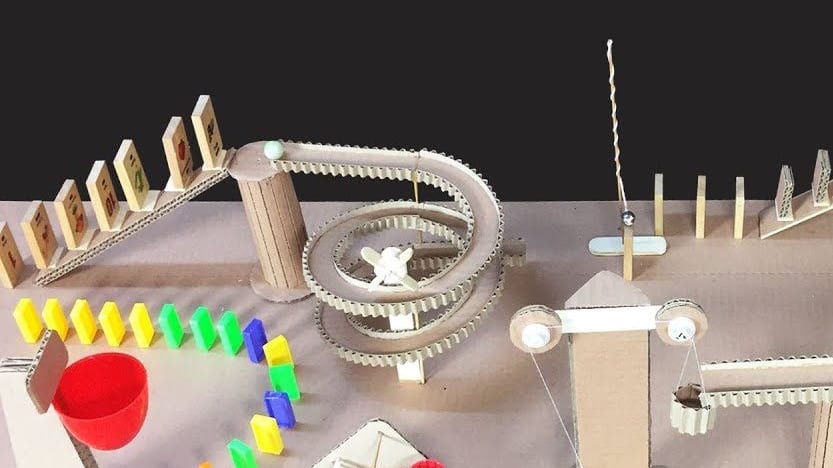ANCHOR PHENOMENON:
OK Go is a rock band from Chicago, Illinois, USA. Not only do they record great music, but they also create really cool music videos! Let's watch their music video for their song, "This Too Shall Pass." While you watch, think about what interesting things you observe!

THINK-PAIR-SHARE:
What do you observe about the machine's movement?
Write your observations in the first column of your "See, Think, Wonder" Chart.
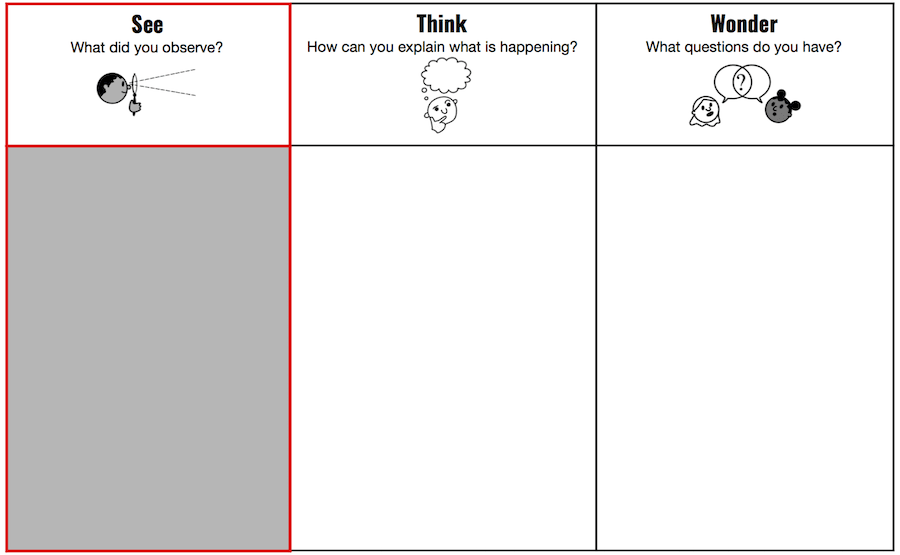
THINK-PAIR-SHARE:
How do you think the machine keeps moving?
Write your explanations in the second column of your "See, Think, Wonder" Chart.
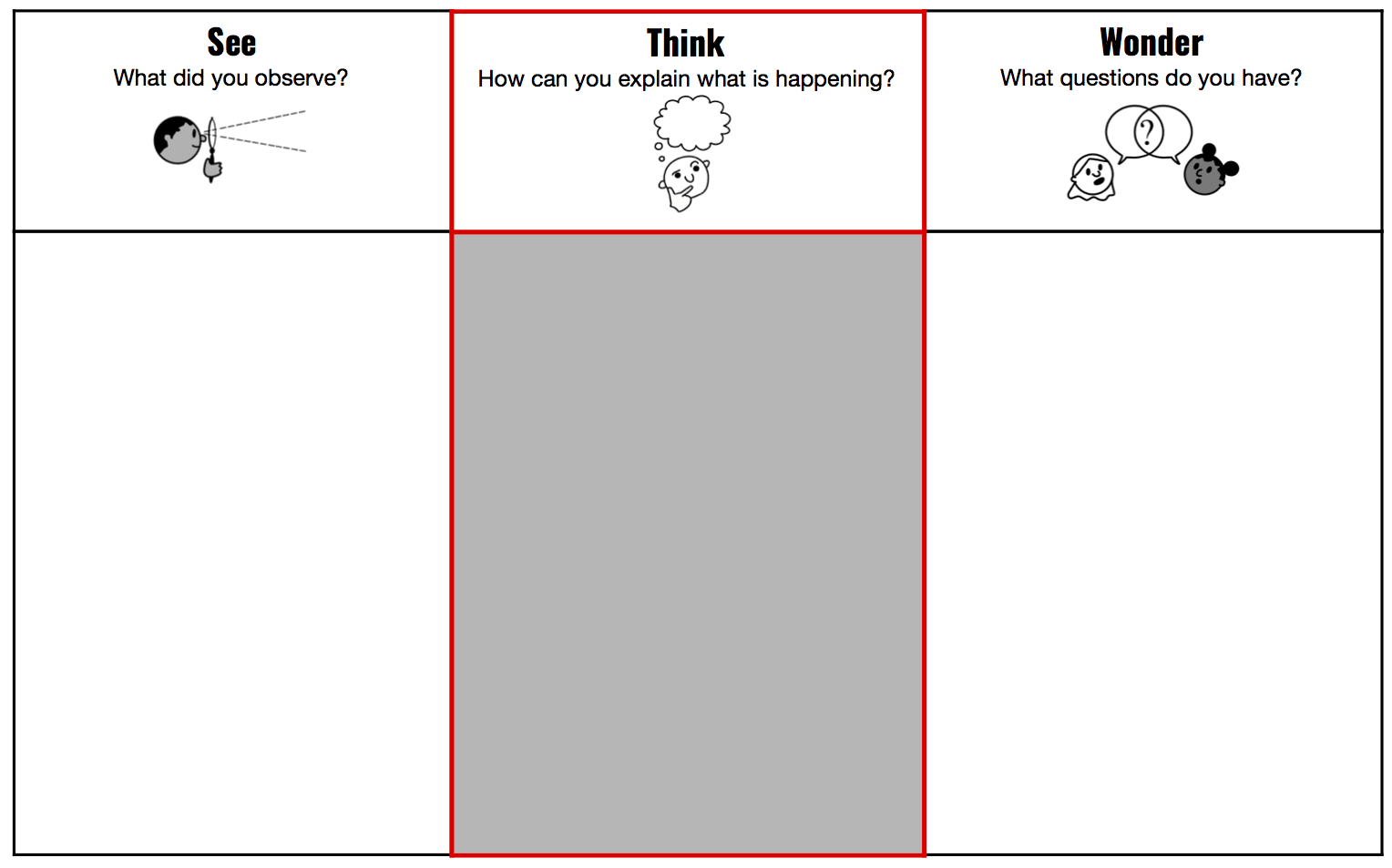
THINK-PAIR-SHARE:
What do you wonder about how the machine keeps moving?
Write your questions in the third column of your "See, Think, Wonder" Chart.
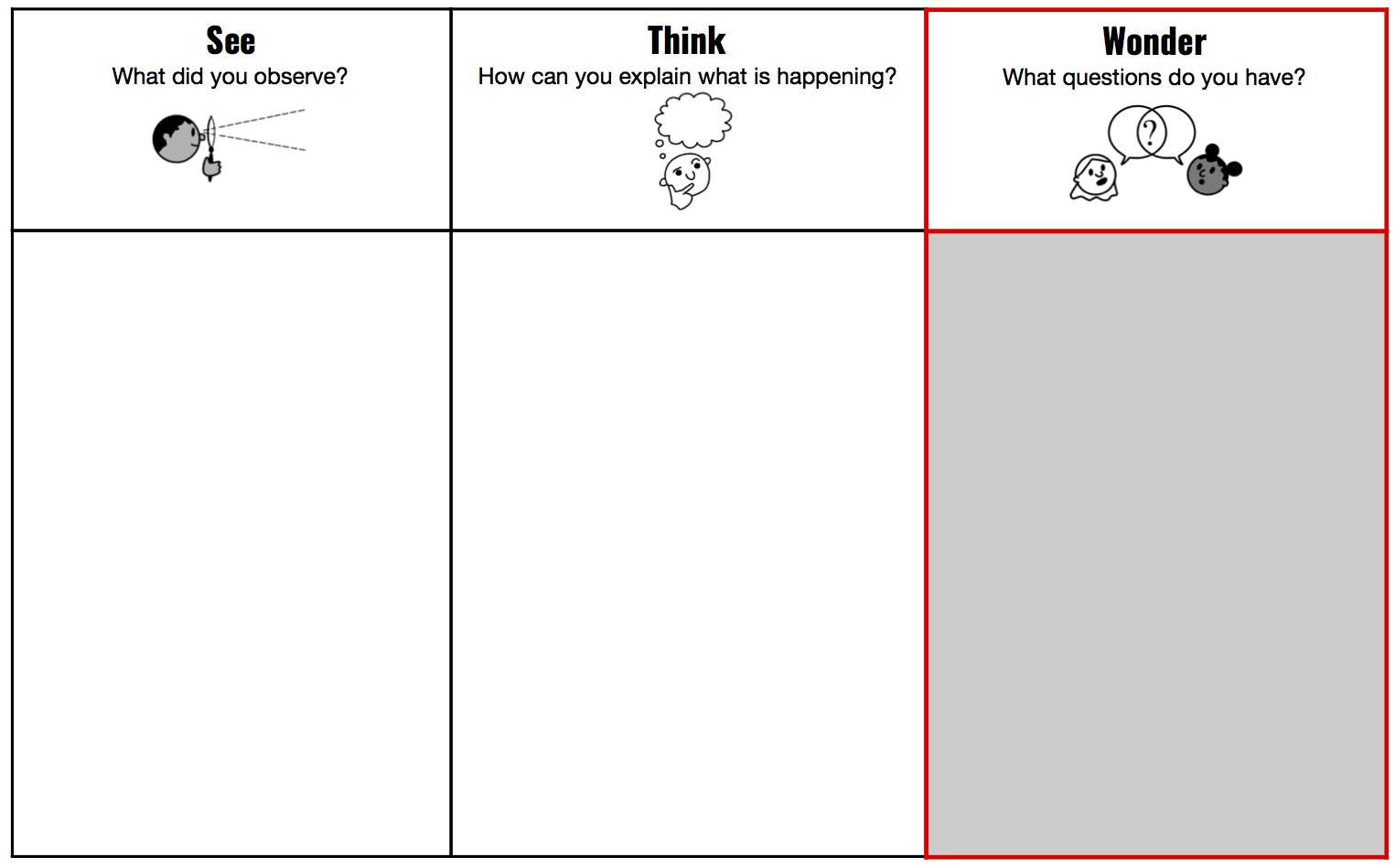
In today's activity, you'll get a drawing of the first 30 seconds of the machine in the music video. You'll use symbols and labels to help you explain how the machine works.
Don't worry if you aren't sure of the right answer yet. You'll have an opportunity to change or add to your drawing throughout the Mysteries in this unit.
We'll walk you through it, step by step.

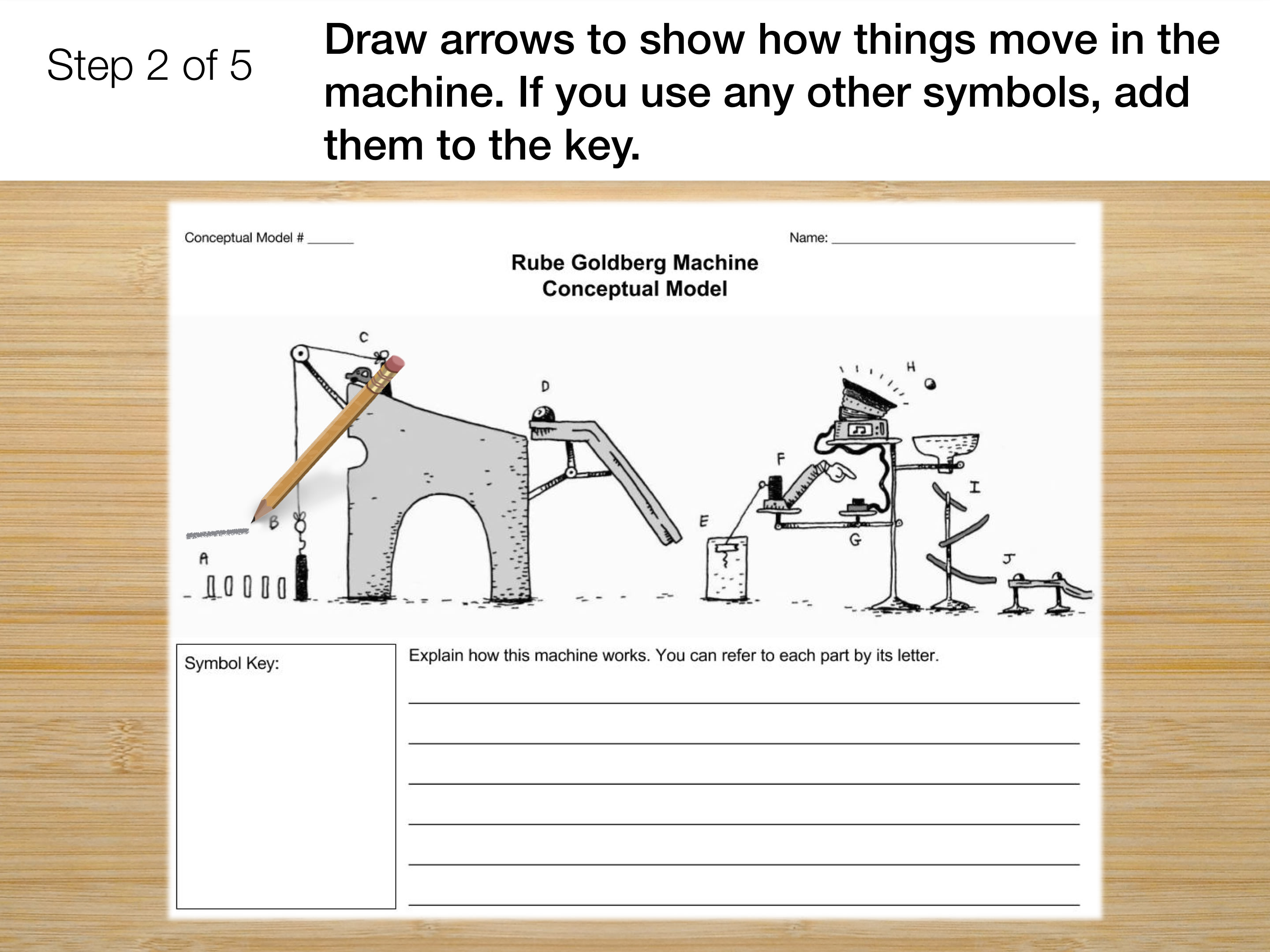
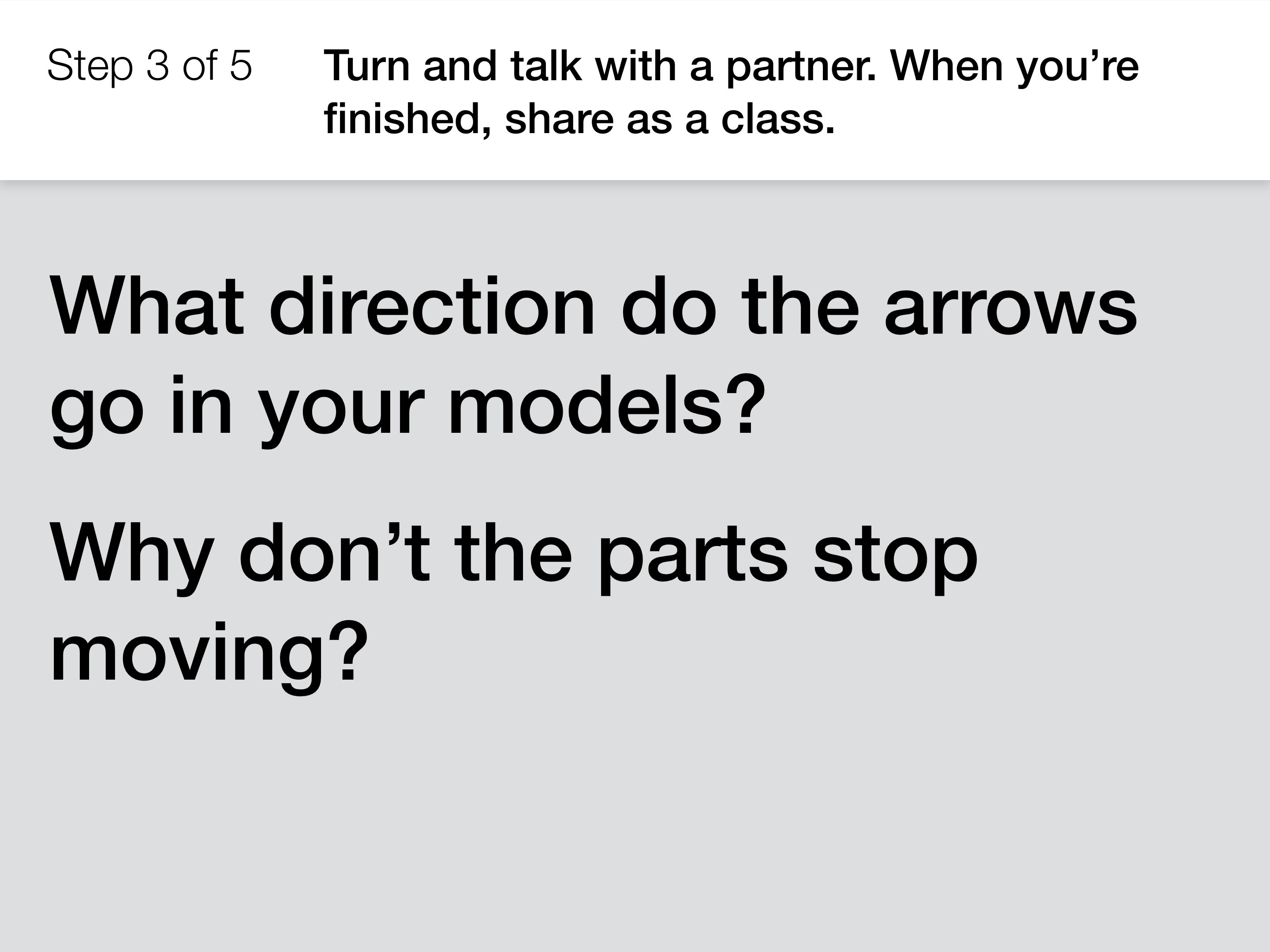
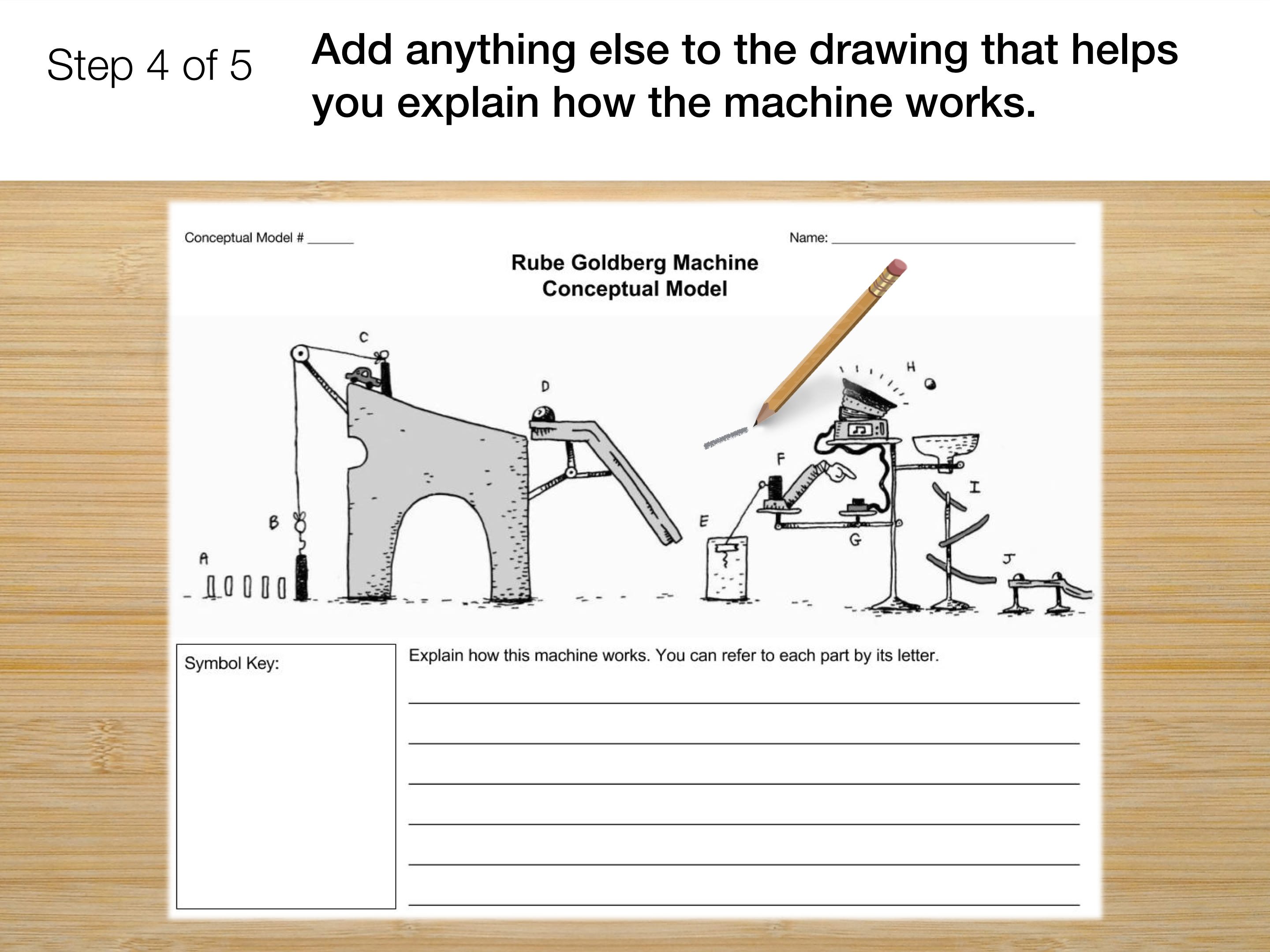
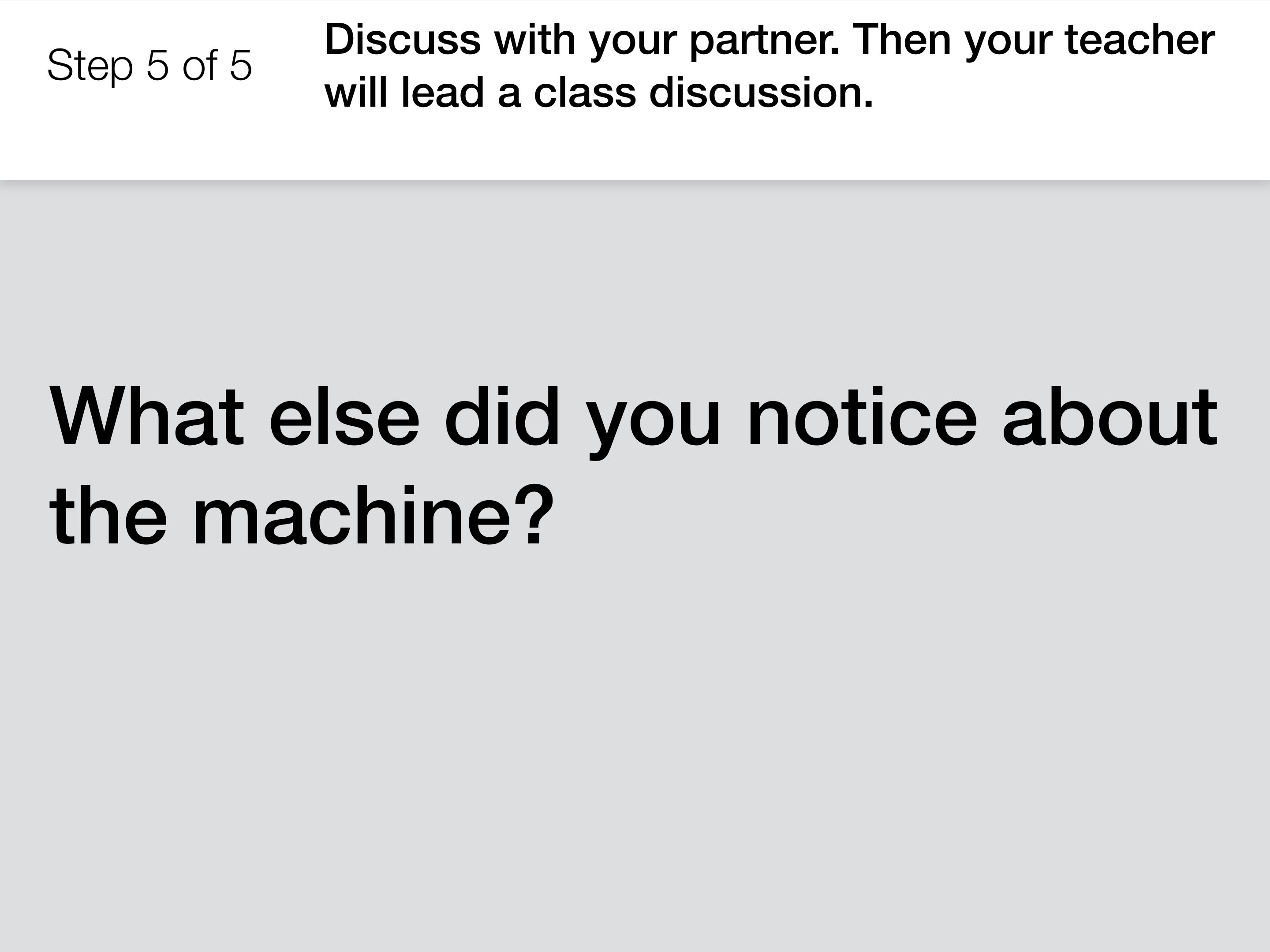
CONCEPTUAL MODEL:
Models are used by scientists to understand and explain something. A model is revised, or changed, as new information is learned.
There are many types of models, but you just finished creating a conceptual model.
A conceptual model helps scientists explain things that they can't see. After each Mystery, you will add the new things you've learned to your model.
You've completed the Anchor Phenomenon!
Be sure to keep each student's Rube Goldberg model worksheet accessible. They will use it in the Anchor Connection after each lesson.
Teach lesson 1 next: How can a car run without gas?
